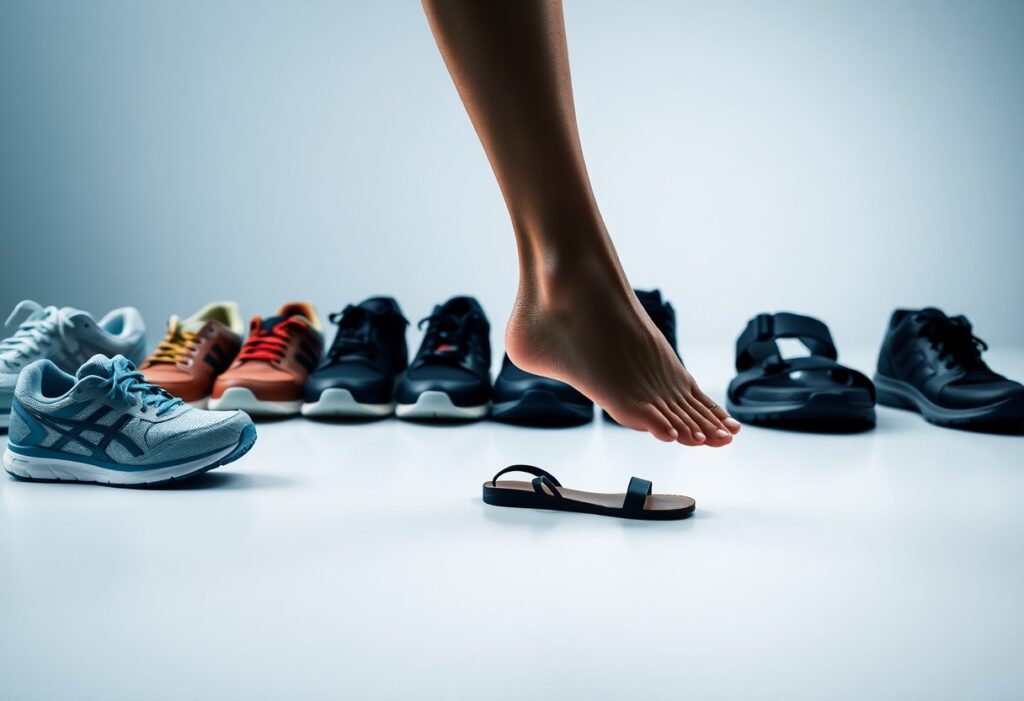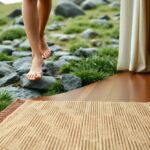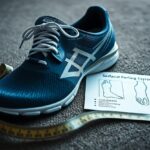
As you walk, the type of footwear you select can profoundly influence your foot health. Many people might think that shoes with enhanced cushioning and support are the best solution for foot discomfort; however, traditional footwear can often cause more harm than good. According to Dr. Alissa Kuizinas, a podiatrist based in Massachusetts, barefoot shoes or minimalistic shoes are recommended as they can contribute to stronger, healthier feet. By choosing footwear that allows your feet to function naturally, you can significantly reduce the chances of developing foot problems and promote your overall foot wellness.
Discovering the Hidden Dangers of Conventional Footwear
While conventional shoes may provide temporary relief for foot pain, they frequently exacerbate existing conditions and introduce new complications, as highlighted by Dr. Alissa Kuizinas. She points out that the $133 billion shoe industry often prioritizes appearance and profit over genuine foot health, leading to designs that can constrict and weaken your feet over time. This reliance on traditional footwear can create a cycle of dependency that ultimately undermines your foot health, making it essential to reconsider your shoe choices.
Examining the Shoe Industry’s Failure to Address Foot Health
The root of this problem lies in the shoe industry’s flawed approach to addressing foot health. Instead of tackling the underlying causes of discomfort, the focus is often on adding excessive cushioning, support, and rigid construction to footwear. This misguided strategy can create a reliance on shoes that may actually weaken your foot health in the long run, resulting in various complications that could have been easily avoided with better knowledge and choices.
Understanding the Design Flaws of Traditional Shoes
Traditional shoe designs commonly feature narrow toe boxes, stiff soles, and excessive cushioning that can restrict natural foot movement, leading to weak and dysfunctional feet. Dr. Kuizinas insists that footwear should protect your feet from the outside environment, rather than limit their natural movements. An ideal shoe should emphasize natural foot function and minimalist attributes, including spacious toe boxes, flexible and flat soles, along with minimal cushioning to support foot health effectively.
By adopting barefoot shoes or minimalistic footwear, you can actively strengthen your feet and improve your overall foot health. Dr. Kuizinas promotes a philosophy of utilizing as little shoe as possible, which allows your feet to function naturally and move freely. This approach is crucial for maintaining healthy foot mechanics and avoiding various foot issues in the future.
The Essential Benefits of Natural Foot Movement
Footwear that inhibits your foot’s ability to move freely can lead to a wide array of foot problems and discomfort. It’s vital to assess how your shoe choices impact your overall foot health and comfort levels. Understanding this relationship is key to making informed decisions about your footwear.
Evaluating How Shoes Affect Foot Mobility
To fully understand the effects of shoes on your foot’s mobility, it’s important to analyze the specific design and features of your footwear. Traditional shoes often come with cushioning and support elements that can actually hinder your foot’s natural movements, resulting in weak and dysfunctional feet over time. This limitation can stifle your feet’s development of the necessary strength and flexibility they need for optimal function and health.
Reaping the Benefits of Allowing Natural Foot Mobility
The advantages of permitting your feet to move freely are extensive, as strong feet serve as a foundation for overall foot health. By choosing minimalistic shoes or barefoot footwear, you empower your feet to operate in a natural manner, promoting strength and resilience. Movement is vital for developing robust feet, and when confined by conventional footwear, you risk encountering various foot issues and discomfort. In contrast, embracing minimalistic shoes or barefoot options can significantly bolster your foot health by allowing for unimpeded movement and facilitating muscle strength development. By selecting the right footwear, you can reduce your risk of foot complications and enhance your overall foot wellness.
Understanding the Importance of Functional Footwear
Gaining a comprehensive understanding of functional footwear is crucial, as these shoes prioritize both foot health and natural movement. Functional shoes are specifically crafted to allow your feet to operate as intended, eliminating the need for excessive support or confinement.
Defining Functional Footwear and Its Key Features
Through research and experimentation with various shoe styles, you will find that functional footwear possesses distinctive characteristics, such as a broad toe box, flat and flexible soles, along with minimal cushioning and support. These features enable your feet to move freely and naturally, fostering stronger and more capable foot mechanics.
Enhancing Foot Health Through Functional Footwear
Wearing functional shoes brings numerous benefits, including enhanced foot strength, a lower risk of injury, and improved overall foot health. These shoes allow your feet to function as they were designed to, paving the way for stronger feet and better balance in your daily activities. Conceptually, functional footwear is designed to support your feet without imposing unnecessary restrictions, enabling natural movement and flex. This design philosophy promotes optimal foot health and reduces the likelihood of developing foot ailments. By selecting functional shoes such as barefoot shoes or minimalistic options, you actively foster healthy foot function and lessen the risk of foot pain and injury. Transitioning to functional footwear may require patience and gradual adjustment, but the long-term benefits for your foot health are invaluable.
Recognizing Key Features of Effective Functional Footwear
To ensure optimal foot health, it is essential to look for shoes equipped with specific features. The key attributes to prioritize include:
- Wide toe box
- Flat and flexible soles
- Minimal cushioning and support
Being aware of these characteristics will greatly assist you in selecting shoes that promote healthy foot function and support.
The Significance of Wide Toe Boxes and Flexible Soles
A vital aspect of functional shoes is a wide toe box, which allows your toes to spread naturally. This design feature helps prevent toe jamming and other discomfort-related issues that could potentially lead to chronic foot pain. By ensuring your toes have enough room to move, you can significantly enhance your overall foot comfort.
Understanding the Importance of Minimal Cushioning and Support
In addition to a wide toe box, functional shoes should also feature minimal cushioning and support. This design aspect enables your feet to move naturally while strengthening foot muscles, thereby decreasing the risk of developing foot issues. It’s essential to emphasize that minimalistic footwear, including barefoot shoes, can significantly enhance your foot health by allowing your feet to function freely. By choosing shoes with minimal cushioning and support, you can bolster muscle strength in your feet and lower the chances of injuries. This strategic approach not only improves your overall foot health but also reduces the likelihood of experiencing chronic pain. Therefore, prioritize shoes that permit natural foot movement without excessive cushioning or support.
Successfully Transitioning to Functional Footwear
Having recognized the significance of functional footwear, it’s time to embark on your transition. Contrary to the common belief that more cushioning and support equate to better comfort, you should opt for minimalistic shoes or barefoot shoes that facilitate your feet’s natural functioning.
Effective Strategies for Transitioning to Functional Footwear
Despite any initial hesitations, begin incorporating functional shoes into your daily routine with these practical tips:
- Start with short walks and gradually increase the distance
- Choose shoes with a wide toe box and flat soles
- Look for minimal cushioning and support
The key is to allow your feet adequate time to adjust to the new shoes while strengthening the muscles in your feet.
Recognizing the Necessity of Patience During Transition
Transitioning to functional footwear requires patience and a gradual approach. Wearing overly minimalist shoes can lead to discomfort and pain if your feet are not accustomed to them. Starting slowly is crucial, allowing your feet to acclimate to the new footwear. Footwear options like barefoot shoes or minimalistic shoes can be highly beneficial for your foot health, but it’s important to introduce them gradually. Overuse or improper sizing can lead to injuries or ongoing discomfort. The ultimate aim is to strengthen your foot muscles while improving your overall foot health, so be patient and avoid rushing the process. The benefits will be substantial; expect to experience improved balance, less pain, and stronger feet.
Building Strong and Functional Feet for Life
Even in a world where the norm is to wear shoes with excessive cushioning and support, you can foster strong and functional feet by making informed footwear choices.
The Connection Between Foot Strength and Overall Health
In conjunction with other health factors, foot strength plays a critical role in your overall well-being, affecting your balance, posture, and movement capabilities. Strong feet contribute to better overall body alignment and reduce the risk of injuries.
How Functional Footwear Supports Strong Feet Development
Well-designed functional shoes that incorporate a wide toe box, flat and flexible soles, and minimal cushioning are essential for cultivating strong feet, as they facilitate natural movement. Indeed, wearing functional shoes or barefoot shoes can significantly aid in building stronger foot muscles and enhancing your overall foot health. By allowing your feet the freedom to move and operate naturally, you reduce the risk of foot problems and optimize your balance and stability. As you transition to minimalistic shoes, you should anticipate improvements in your walking technique and your overall sense of well-being.
By taking charge of your foot health, you can select shoes that support your feet’s natural functions rather than hinder them. Choosing barefoot shoes or minimalistic options that allow your feet to function naturally will promote strength development over time. In doing so, you will experience increased stability and comfort during various activities, providing your feet the opportunity to become strong and capable. Start your journey by seeking shoes with a wide toe box, flat and flexible soles, and minimal cushioning and support, and exercise patience as you transition to a more natural walking style.
The Article A Podiatrist’s Guide to How Shoes Affect Your Foot Health appeared first on My Shoes Finder
The Article How Shoes Impact Your Foot Health: A Podiatrist’s Insights Was Found On https://limitsofstrategy.com








Comments are closed